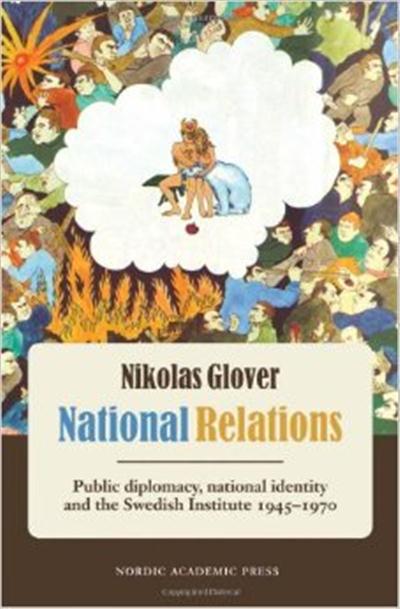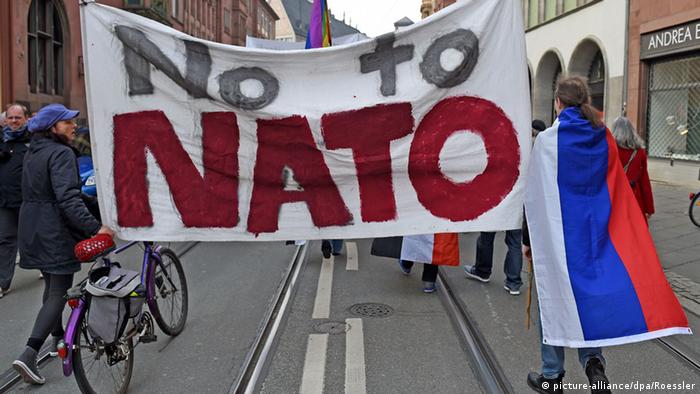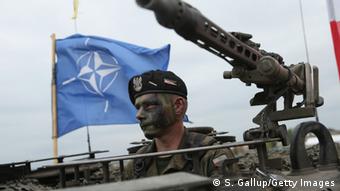[JB note: Evidently, according to Google, an earlier version of this article stated: "Among Rossotrudnichestvo's stated aims are the development of public diplomacy and of regional and subregional integration."]
Ivan Nechepurenko, themoscowtimes.com
image from
As Russian officials blame the West for ongoing unrest in Armenia, analysts say that Moscow only has itself to blame for its loss of regional influence.
As Russian officials scramble to heap blame on Western NGOs for anti-government protests that have swept the Armenian capital in recent days, analysts argued that Moscow only has itself to blame for its loss of influence in the former Soviet space.
More specifically, Russia has lost its regional grip due to the failure of its soft power policy, which created a vision of progress, but produced no tangible result, experts told The Moscow Times.
As if admitting defeat, the head of Kremlin-backed think tank the Institute for Democracy and Cooperation (IDC) has announced the imminent closure of the organization’s New York branch, the Gazeta.ru news site reported Sunday. IDC New York director Andranik Migranyan said the think tank’s Paris branch is facing difficulties staying afloat due to decreased funding from Russian companies, the same report said.
But as its own soft power initiative fails, Moscow is gearing up to crack down on foreign NGOs. On Friday, the Federation Council is set to compile a list of such organizations that should be banned from working on Russian soil.
This disconnect owes to the fact that Russian officials lack a working comprehension of what soft power is, experts told The Moscow Times. Rather than fostering fresh, young leaders, working across the political spectrum and championing modern values, Moscow works only with a select group of aging elites and hopes Russia’s historic achievements will remain sufficiently compelling to keep the former Soviet population loyal to Moscow, they said.
“Russia appeals to archaic traditions and is unable to compete with the modernist culture of the West,” said Alexei Makarkin, deputy head of Moscow-based think tank the Center for Political Technologies.
“Our conservative values do not resonate with young people,” Makarkin said in a phone interview, explaining why Russia has lost the fight for the hearts and minds of youth across the former Soviet space.
Pavel Gubarev, a prominent figure in eastern Ukraine’s self-proclaimed Donetsk People’s Republic, lamented in an interview Tuesday with nationalist website Russian People’s Line that in contrast with their American counterparts, Russian organizations tend to veer toward corruption.
“Look at how Americans work: they find ideological people, give them money and resources — everything they need to continue doing what they believe in. Because this is important for the U.S. and that’s how it’s been for the past 23 years,” he said. “And all our alleged Russian organizations simply syphon off funds.”
Armenian Upheaval
As anger over energy price hikes boiled over into anti-government protests in Yerevan this month, Russian lawmakers and pundits were quick to assert that the civil unrest had been orchestrated by the United States in a bid to steer yet another former Soviet state out of Moscow’s orbit.
Konstantin Kosachyov, head of the Federation Council’s international relations committee, told state-run news channel Vesti-24 last week that perhaps foreign NGOs were to blame. “I don’t exclude the theory that foreign nongovernmental organizations may be behind these events. … We understand well that in the absence of prophylactic measures, such turmoil could also happen in our country,” said Kosachyov. Prior to his stint as a senator, Kosachyov served head of Rossotrudnichestvo, the government agency tasked with promoting Russia’s image abroad, from 2012 to 2014.
Lawmakers and state media outlets alike have readily echoed Kosachyov’s interpretation of the events that continue to grip Armenia, a landlocked country of 3.2 million people in the Southern Caucasus.
A doctored image of an Armenian protester holding a Ukrainian flag has been widely circulated by Russian media outlets, which have seized the opportunity to draw parallels with the mass protests that toppled Ukraine’s former Kremlin-loyal leader Viktor Yanukovych last year, the Kommersant daily newspaper reported last week.
Official Moscow has frequently and fervently accused the West of having instigated both the Ukrainian upheaval, and the revolution in Georgia that led to the ouster of its former leader Eduard Shevardnadze in 2003.
Prophylactic Measures
One of the measures the Kremlin hopes will deter a revolutionary scenario on its own turf will rear its head Friday, when senators meet to draft the so-called “patriotic stop-list,” which will include foreign organizations that could prove threatening to Russia, Gazeta.ru reported Monday. The list will then be passed on to the Prosecutor General’s Office and the Foreign Ministry, which have been tasked with selecting organizations to be included on the final version of the list.
These are the consequences of a law signed in May by President Vladimir Putin banning the activities of “undesirable” foreign organizations determined to pose a threat to the country’s security and stability.
Citing Russian government sources, Gazeta.ru reported that more than 20 foreign NGOs will feature on this list, including such global human rights powerhouses as Amnesty International, Human Rights Watch and Freedom House.
At present, all of these organizations are fully functioning on Russian soil, and despite this, Putin’s approval rating soared to a record shattering 89 percent this month.
Still, Russian officials continue to view foreign NGOs as tools that can be used to foment unrest in the country. Putin’s approval rating was revealed by the independent Levada Center, which polled 1,600 people across Russia, and had a margin of error not exceeding 3.4 percent.
Putin likewise defended an earlier crackdown on civil society during a meeting last week with members of the Civic Chamber, where he said the adoption of a 2012 law that required all foreign-funded NGOs engaged in loosely defined political activity to accept the label of “foreign agents” was justified. This law has been lambasted by Russian NGOs, who see it as an effort to stifle their work in the country.
“We introduced the ‘foreign agent’ concept to prevent foreign states from using such instruments to meddle in our domestic affairs,” Putin said at the meeting.
Despite its understanding that NGOs and other instruments — such as media outlets — can be used to exert soft power and destabilize states, Russia has failed to assert its own influence in the former Soviet states, pundits said. According to analysts, the tendency of Russian officials to view every popular uprising through the prism of foreign-orchestrated color revolutions reflects the state’s deep-seated fear of a such a coup on its own territory.
“The Kremlin still thinks that it is sufficient to simply work with the ruling elites, and is not concerned about what people in [other] countries think,” said Vasily Gatov, visiting fellow at the University of Southern California’s Annenberg Center on Communication Leadership and Policy.
“Also, Russia still thinks that the Soviet legacy will be sufficient to garner popularity. But in contrast with the Soviet Union, Russia does not offer any grand idea apart from ‘let’s stick together to survive in this cruel world,’” Gatov said in written comments.
Russian Soft Power
In recent years Russia has poured significant resources into programs aimed at bolstering its image around the world.
The program lists numerous benchmarks for the evaluation of its effectiveness. Among these are an increase in the number of Rossotrudnichestvo’s representative offices and an increase in the number of Russia-themed cultural events around the world. The benchmarks measure the desired results in percentages, units and numbers of people.
According to its website, the agency hosts cultural events abroad, supports Russians around the globe and promotes Russian language and culture. It also invites foreign journalists, politicians and civil society members to Russia via its New Generation program. More than 8,000 people from 80 countries have visited Russia through the program since 2011, Kommersant reported this month.
The program’s aim is to “widen the circle of active young foreigners who are constructive and positive about Russia,” according to the agency’s website.
But to come to Russia under this program, young people must be able to demonstrate a pre-existing interest in “acquiring true information about today’s Russia,” Lyubov Glebova, head of Rossotrudnichestvo, told Kommersant.
In 2013, the Federal Bureau of Investigation voiced concern that the Russian government was using this program as a means of recruiting foreign spies, The Washington Post reported at the time. The Russian government has denied these claims.
Regardless of whether these charges are true, the program appears thus far to have had little impact on popular attitudes toward Russia abroad. Only 26 percent of respondents in eight NATO countries told U.S.-based pollster Pew Research Center they held a favorable view of Russia. The survey was conducted among 11,116 respondents between April and May. Pew did not reveal the survey’s overall margin of error.
Rossotrudnichestvo did not return a request for comment by the time of publication.
Perhaps the most successful iteration of Russia’s charm offensive thus far was the 2005 establishment of RT, a global television network that currently broadcasts in English, Spanish and Arabic. RT claims to have a 2015 budget of $275 million.
A decade since its establishment, the channel has emerged as a force to be reckoned with in the eyes of Western governments and institutions, who view the network as among the Russian state’s most powerful weapons — one that could pose an international threat if not adequately contained.
According to Tatyana Stanovaya, a leading analyst at Moscow-based think tank the Center of Political Technologies, the reason Russia’s soft power policy has failed is because it unwaveringly pushes against the tide of popular sentiment.
“Russia always separates people into ‘friends’ and ‘foes,’” she wrote in a comment last week for website Slon.ru. “Russia’s fundamental aim is to prevent a ‘color revolution.’ The U.S. has a different aim: to bolster ties with any force that can gain power, whether as a result of an election or a revolution.”
















